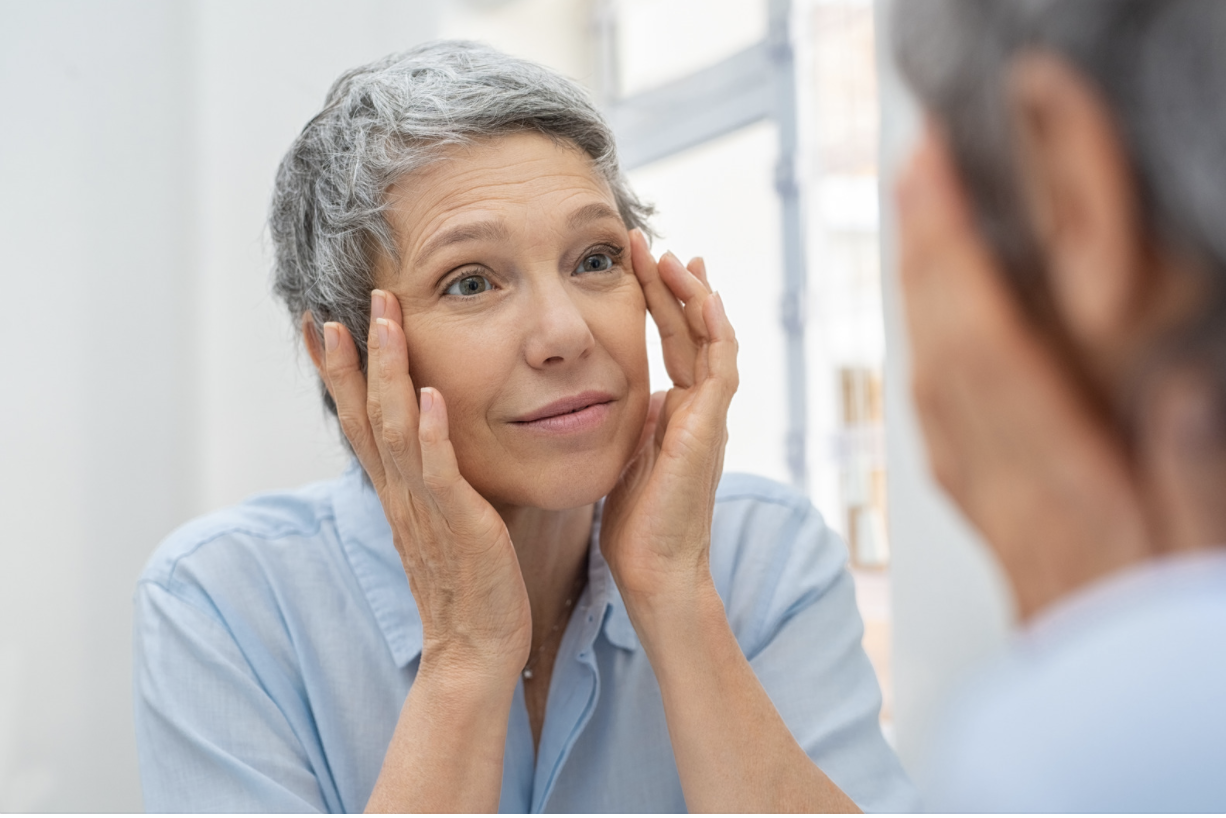About Face: What’s Causing Your Face To Age?
February 3, 2021

Have you found yourself wincing at your own image on some of your recent Zoom calls? Do you wonder when those deeper facial folds or lined upper lips began to appear? And do you even care anymore, given that most of these changes are now covered by your mask and in-person, unmasked gatherings are likely many months away?
There’s no doubt that there’s a reason so many of us not only feel we’ve aged faster over these many months but in fact see the signs of it on our faces. In essence, the chronic, ongoing stress that so many of us have lived with for the past 11 months has had a real physical impact on our bodies and our beauty. Stress leads to the release of the stress hormone cortisol, which increases inflammation in your body and accelerates aging. You’ve likely also had less sleep, which means less melatonin in your system and less collagen production, contributing to increased skin aging. As one expert explained, “Long periods of elevated cortisol may be causing many of us to feel that our faces have, quite literally, fallen.” And with all those video chats and zoom meetups, we’ve also likely overdone some of our facial skincare routines, causing further irritation. It’s no wonder some of us are unrecognizable to ourselves at this point!
New research has demonstrated that the appearance of facial aging is accelerated by the loss of fat in your facial skin, both close to the surface as well as deeper underneath. What the researchers found was that among women ages 46-57, there is a definite and measurable loss of fat volume in the mid-face area (between your eyes and mouth). So if your cheeks look deflated, your eyes look more hollow and your jowls look heavier, there’s a biological reason for that, which unfortunately signifies that you’re getting older. The good news for this research is that it gives cosmetic dermatologists and plastic surgeons a new direction for improving the appearance with a more natural-looking result. But don’t be tempted to take this knowledge and perform a DYI cosmetic intervention on yourself: there’s been a recent uptick in the illegal sale of fillers and injections on the internet and your “home version” of a cosmetic procedure could lead to disastrous and dangerous results. In other words, leave the jabs and injections to the experts!
There are also some behaviors and habits that can contribute to the appearance of facial aging. For example, drinking from a straw or directly from a bottle causes you to purse your lips, a no-no for anyone concerned about upper lip lines. As well, outdoor activities without sunglasses may cause excessive squinting and such repetitive motions can exacerbate wrinkles (as can eye rubbing). For more behavioral modifications that can lead to better beauty results, pull out your powder puff and read here.
Finally, we’ve previously profiled the concept of “face yoga” a facial exercise routine to strengthen facial muscles and counteract fat loss in your face. Did you know that there’s now a website called faceyoga.com, which promises to provide you with personalized, scientifically-based facial exercises to improve your appearance and lessen your wrinkles, all without the risks of invasive cosmetic interventions? Apparently, your face has 42 distinct muscles that need exercise and engagement just as the other muscles in your body do. This website even has a phone app so you can take your facial yoga routines wherever you find yourself these days. For more insights into this unique exercise regimen, open your eyes wide and click here.







